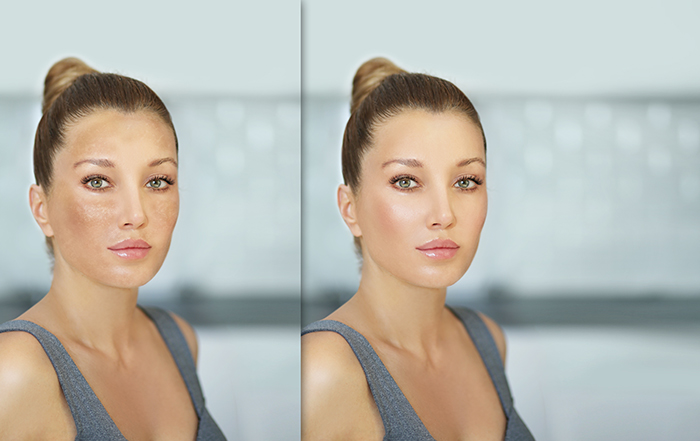What is Hyperpigmentation?

Year-round sunshine is one of the great advantages of living in South Florida.
However, that comes with a price. We all know that skin cancer can result from too much sun, but another condition — a less dangerous one — can also be a consequence of bright rays.
Hyperpigmentation is quite common.
It’s the term used when you have patches of skin that are darker than the rest. Some people call these sunspots or age spots, and they’ll sprout anywhere your skin is exposed. While their size and shape can vary, they’re typically flat with a light to medium brown color.
“It’s really a form of sun damage,” says Shasa Hu, M.D., a dermatologist with the University of Miami Health System. “But we tell patients these brown spots are typically not cancerous.”
It’s not just the sun that can leave your skin with an uneven tone. Some illnesses and drugs, acne scarring, and even inflammation can result in these dark patches. So can trauma to the skin (think a wound or burn). For example, Addison’s disease, a rare endocrine disorder, can result in dark patches. So can pregnancy and chemotherapy drugs.
That’s because these situations may prompt our bodies to produce extra melanin, the pigment that gives our skin color. Melanocytes produce melanin. When these skin cells are damaged, whether temporarily or permanently, they may manufacture more melanin.
Sometimes they also make less. Vitiligo, for example, is a condition that results in patches of light skin because of less melanin production.
Dermatologists have a name for these brown spots: lentigines. They occur most frequently on the face and the back of hands, sometimes increasing in number as a person ages. These aren’t to be confused with freckles, which occur in younger people and those with lighter skin.
What is melasma?
Another type of hyperpigmentation is called melasma. It’s more commonly seen in women and has some connection to hormones, especially during pregnancy. (It’s occasionally referred to as “the mask of pregnancy.”) That link, however, “is not as strong as we once thought it was,” Dr. Hu explains. “We see plenty of patients who have never gotten pregnant or taken birth control pills.”
Melasma spots are more prominent and typically appear in the forehead, jawline, above the lip, and across our cheeks. It tends to affect more olive-skin groups, including Asian, Indian, Latin American, and African. It also can run in families.
Like other forms of hyperpigmentation, “it can be triggered by just a little exposure to sunlight,” Dr. Hu said. It’s not uncommon for melisma patients to complain that the blotchy patches worsen during the summer months.
The discoloration, while not dangerous, can be aesthetically displeasing. The best way to prevent it is simple: “Sunscreen is the first line of defense,” Dr. Hu says. “I always recommend 30 SPF or higher every day, every two hours.”
Her other suggestions:
- Always consult with your dermatologist before starting any regimen. Some chemicals can cause irritation and even hypopigmentation (pigment loss) with long-term use. Others should not be used together.
- Try skin products that contain skin-lightening ingredients. Look for over-the-counter topical products that include niacinamide (Vitamin B3), licorice extract, and arbutin. These creams (or gels) are usually effective and must be applied once or twice a day. They do take time, however. More robust (and faster) forms of these treatments are by prescription.
- Drop acid, the safe kind. Effective spot-reducing creams include kojic acid or azelaic acid, a gentler ingredient. Glycolic acid can also help with discoloration.
- Take your vitamins — topically. Retinoids are a form of vitamin A that’s effective in treating hyperpigmentation. It also helps with skin cell turnover. Vitamin C, in addition to blocking melanin production, is a good antioxidant that brightens the skin.
- Consider various in-office treatments. Your dermatologist might suggest lasers, chemical peels, or microneedling. These work best when paired with an at-home skin regimen.
- Watch your spots closely. Any changes in size, shape, color, or texture can be a precursor to cancer and should be examined by a dermatologist.
othing is going to be completely effective in erasing [hyperpigmentation],” cautions Dr. Hu. “But there’s plenty we can do to improve it.”

Ana Veciana-Suarez, Guest Columnist
Ana is a regular contributor to the University of Miami Health System. She is a renowned journalist and author who has worked at The Miami Herald, The Miami News, and The Palm Beach Post. Visit her website at anavecianasuarez.com or follow @AnaVeciana on Twitter.
Tags: Dr. Shasa Hu, pigment, skin conditions, sun exposure
